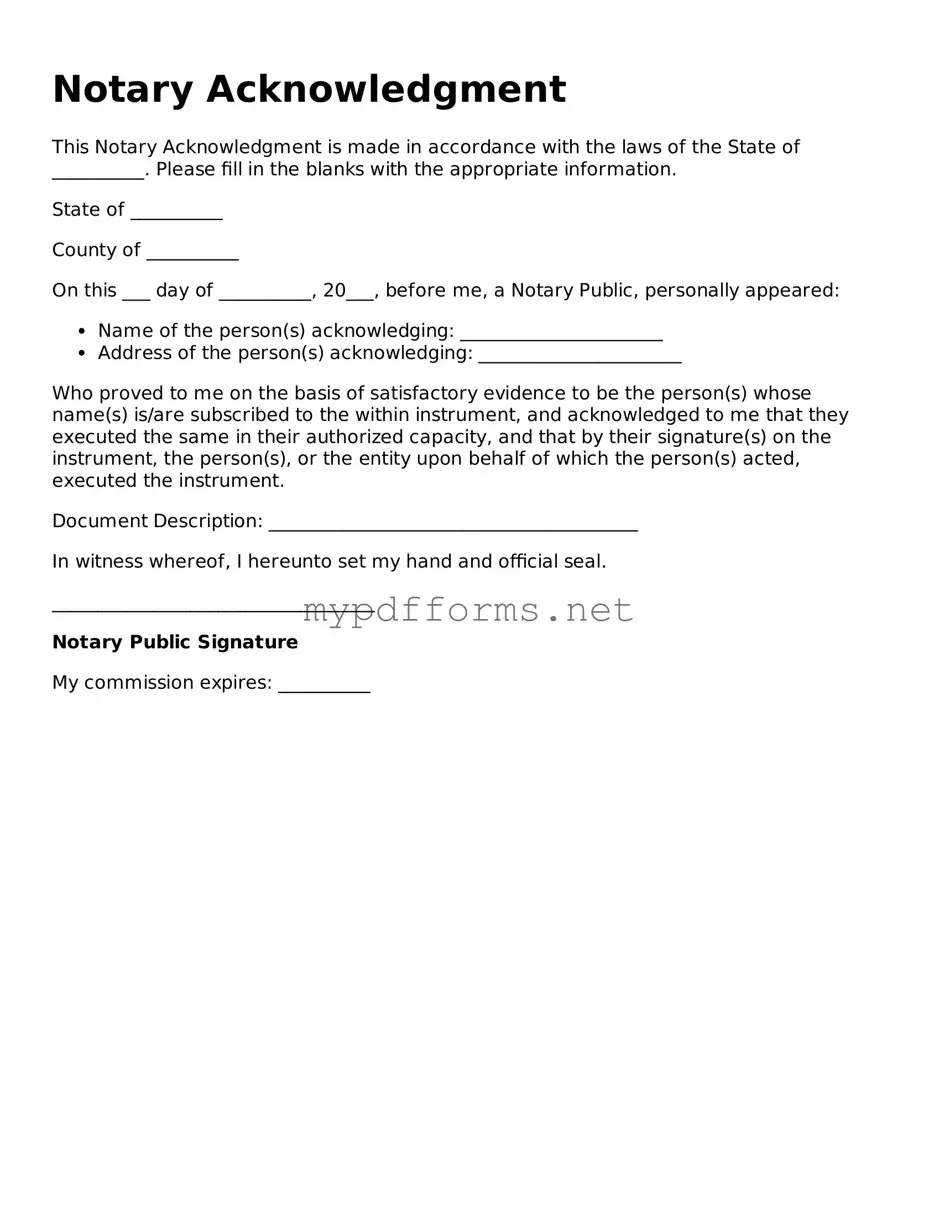The Notary Acknowledgement form plays a crucial role in various legal transactions, serving as a verification tool that ensures the authenticity of signatures on important documents. This form is typically used when an individual is signing a document in the presence of a notary public, who acts as an impartial witness. The notary's role is to confirm the identity of the signer and to ensure that the signature is made willingly and without coercion. Key elements of the form include the details of the signer, the date of the acknowledgment, and the notary's official seal. By providing a clear record of these details, the Notary Acknowledgement form helps prevent fraud and protects the integrity of the document. It is essential for various legal processes, including property transfers, loan agreements, and powers of attorney, where the verification of identity and intent is paramount. Understanding the significance of this form can empower individuals to navigate their legal obligations with confidence.
